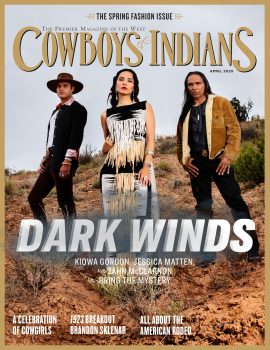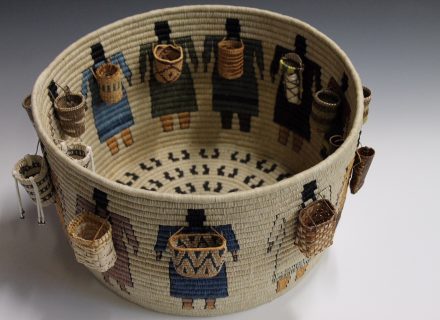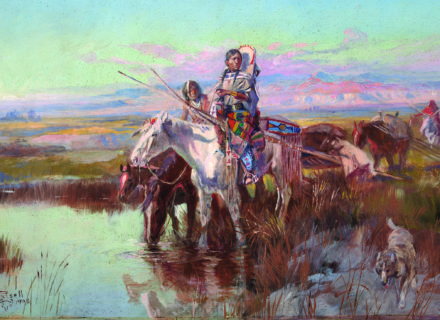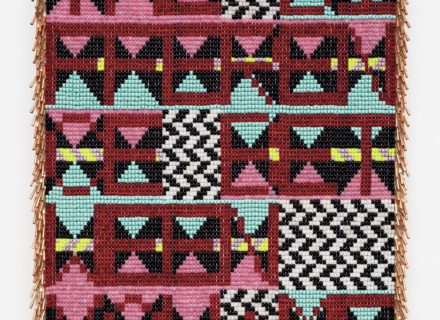Maui. New York. Santa Fe. If the three major points in the artistic arc of Poteet Victory sound like a bucket-list travel itinerary, it’s because the Idabel, Oklahoma, native has never been afraid to pick up, go, find inspiration, and let the return tickets fall where they may.
It’s been a remarkable journey for the son of a Cherokee-Choctaw father, who over the past decade has gained international fame for his “Abbreviated Portraits Series” of abstract celebrity paintings.
Now running the newly named Victory Contemporary gallery in Santa Fe — formerly the McLarry Modern, Victory bought out his partner in the well-known art shop earlier this year — the artist is finally in a place he seems destined for.
The path that brought him here is unique. Dropping out of the University of Oklahoma, Victory bought a one-way ticket to Maui in 1971, where he fell in with a commune and learned to silkscreen T-shirts. In Dallas a couple of years later, his fledgling T-shirt business, Divine Designs, caught the eye of a fellow seeker: Willie Nelson. Soon, Victory was designing all of Willie’s tees.
“Go to a concert today and one of the biggest moneymakers is T-shirts,” says Victory in the languid southeastern Oklahoma accent he’s never cared to shake. “But back then nobody was aware of the money in these things. We’d sell 5,000 to 10,000 shirts in a weekend at Willie shows. Eventually, people caught on this was big business.”
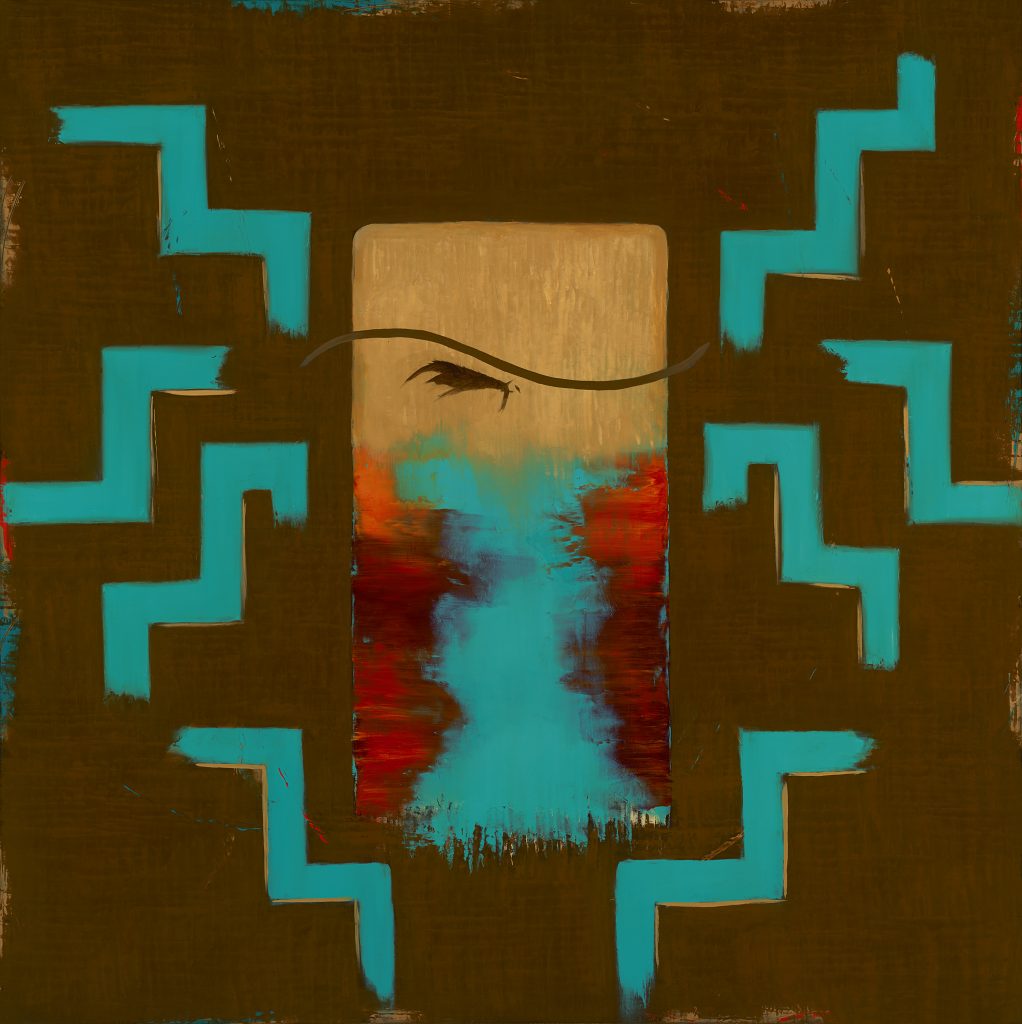
By the time he was 25, Victory was inking huge deals with Coca-Cola and Frito-Lay — an order for a million shirts swamped his Fruit of the Loom partners — but he felt a larger artistic calling. After selling his business for “a substantial amount,” he relocated to New York to study at the Art Students League. The first person he met upon arriving in New York without knowing a soul? Andy Warhol.
“I met him through my mentor, Harold Stevenson,” says Victory of the prominent Oklahoma artist who had taken note of Victory’s exquisite schoolboy drawings of horses. “One on one, Andy was as down-to-earth and nice to me as he could be. For a kid going to school in New York that’s the first person you meet? C’mon, that was pretty heady stuff!”
Victory absorbed Warhol’s insight into America’s fascination with celebrities and did well in school. But he knew he wasn’t a “New York artist.” After banging around the country for a bit, in 1989 he decided on little more than a whim to move to Santa Fe.
The first person he met upon arriving in New York without knowing a soul? Andy Warhol.
“I knew Santa Fe was a big art community,” he says. “What swung it for me was this community of mostly Latinos and Indians. I thought, I can get along with these Indians.”
Working as a bartender in Santa Fe, Victory had two epiphanies. The first was using a palette knife as his primary tool. “I was doing a sort of stylized Indian art and using brushes. I eventually realized no matter how good I got at this, it’s already been done. I purposely set out to create my own style, so I abandoned brushes and picked up a palette knife.”
The ultimate stroke came in 2008. Victory was fascinated with the ubiquity of texting. “All this cell phone stuff started happening. I remember looking at l8r and thinking, I know that’s later, but it doesn’t look like later.”
In December 2008, drawing a line between Warhol and the new pop expressionism, Victory created his first “Abbreviated Portrait” — a minimalist abstraction that merely hinted at its celeb subject. Somehow, a “simple” red square and black dot on a white background evoked the multilayered legend of Marilyn Monroe, or, in his newfound visual lingo, MRLN MNRO. The art world’s reaction was immediate. A sensation had been born.
Victory’s “Abbreviated Portraits,” which now include 19 paintings, earned him a worldwide following and the nickname “The Picasso of Santa Fe.” Completed this year, CLNT ESTWD is the latest installment. To distill the screen hero into his simplest form, Victory started with a brown background referencing the Mexican poncho Eastwood wore in his spaghetti western days. A squinting eye and bare shape of a hat complete the image.
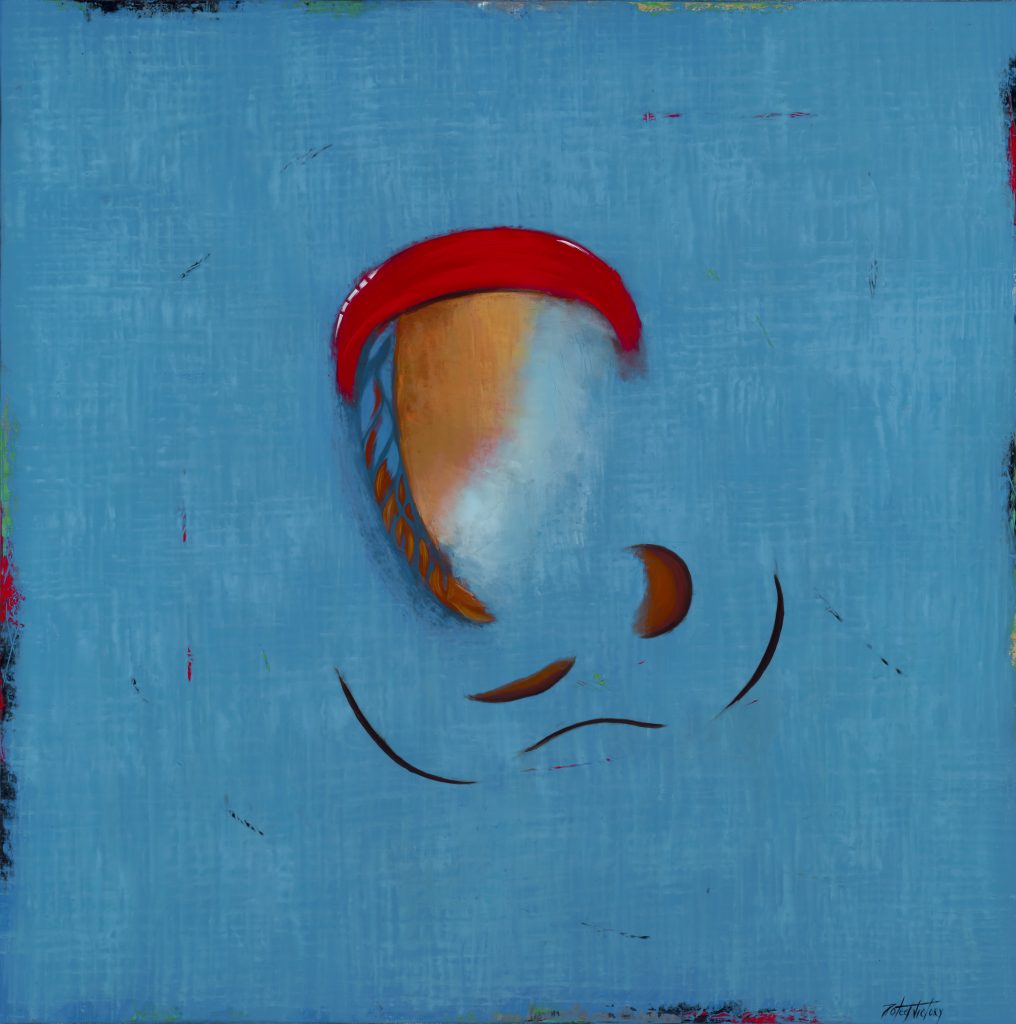
Victory makes 49 prints of two sizes of each painting in the series. He’s sold out of Monroe and The Beatles (BTLS), and says Willie Nelson (WL E NLSN) and a few others are getting close to selling out.
Now 70, Victory still revels in the fame he’s achieved. But helping launch the careers of budding artists gives him as much pleasure as selling his own work. As owner of his own gallery, Victory doesn’t concede he’s slowing down so much as moving in a new direction.
“I’ve got a good eye for art — I can see potential in people,” he says from Victory Contemporary, where he still paints daily in an upstairs studio. “I’m moving toward a more eclectic gallery. Whether it’s portrait or landscape or abstraction, quality and originality are all that matter to me.”
See Poteet Victory’s work at Victory Contemporary in Santa Fe, 505.983.8589.
From the August/September 2018 issue. PHOTOGRAPHY: The Changing River, CLNT ESTWD, and WL E NLSN by Poteet Victory, courtesy Victory Contemporary.













